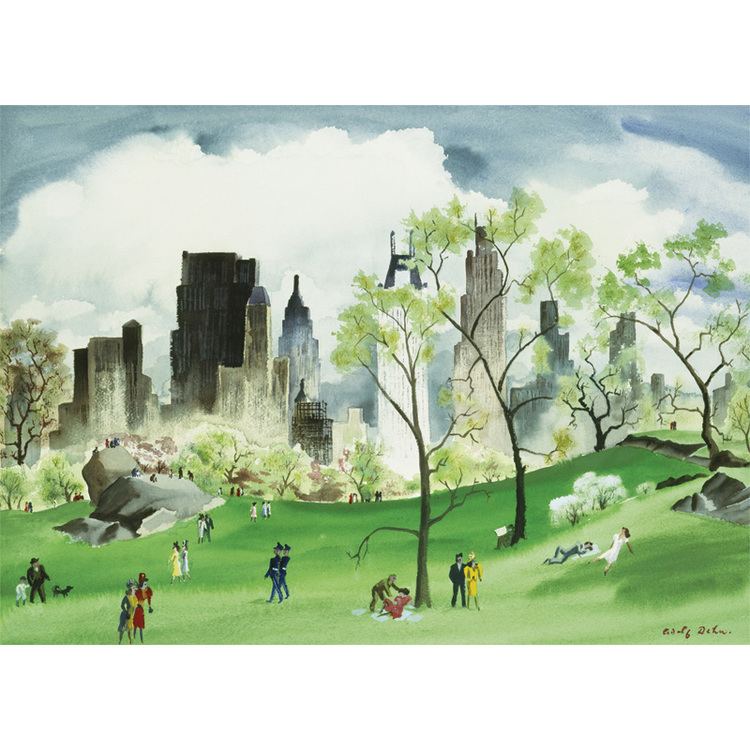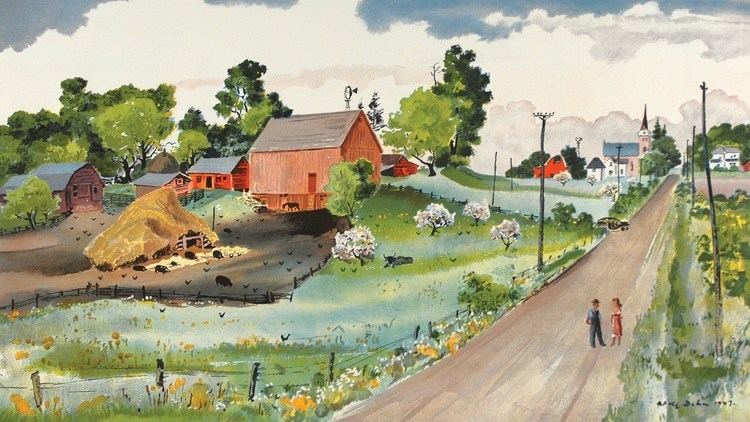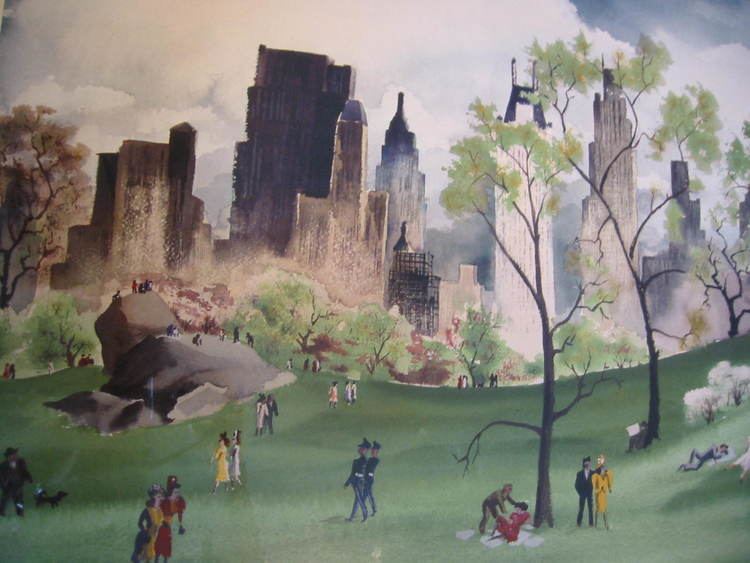Nationality American Name Adolf Dehn | Role Artist | |
 | ||
Books Water Color, Gouache, Adolf Dehn drawings, Adolf Dehn: A Life's Work, 1922-1965 : November 22, 1991- January 5, 1992 Periods Social realism, Regionalism Awards Guggenheim Fellowship for Creative Arts, US & Canada | ||
Henry Adams and Philip Eliasoph on Adolf Dehn (Full)
"Minnesota" by Adolf Dehn part of the School Prints series
Adolf Dehn (22 November 1895 – 19 May 1968) was an American lithographer. Throughout his artistic career, Dehn participated in and helped define some important movements in American art, including Regionalism, Social Realism, and caricature. Two-time recipient of the Guggenheim Fellowship, he was known for both his technical skills and his high-spirited, droll depictions of human foibles.
Contents
- Henry Adams and Philip Eliasoph on Adolf Dehn Full
- Minnesota by Adolf Dehn part of the School Prints series
- Biography
- Early career
- Later career
- References

Biography

Dehn was born in 1895 in Waterville, Minnesota. Dehn began creating artwork at the age of six and by the time of his death had created nearly 650 images.

After graduating as valedictorian from Waterville High School, he went to the Minneapolis School of Art, known today as the (Minneapolis College of Art and Design) where he met and became a close friend of Wanda Gág. Later, he and Gág were two of only a dozen students in the country to earn a scholarship to the Art Students League of New York. After graduation, he was drafted to serve in World War I, but he was a conscientious objector. Dehn was imprisoned for two years for refusing to serve in the military.
Early career

After the war was over, he went to Europe. In Paris and Vienna he belonged to a group of intellectuals and artists, including E.E. Cummings. A number of the caricatures he drew depicting the Roaring 20s, burlesque, opera houses, and the café scene appeared in such magazines as Vanity Fair. His favorite medium was lithography, and he alternated between spoofing high society and creating beautiful landscapes. It was in Paris that Dehn met his first wife, Mura Ziperovitch, a dancer who had left the Soviet Union.
Later career

In 1929 he returned to the New York with his wife. As the Great Depression had taken hold of the country, they were desperately poor, and their financial difficulties contributed to their ultimate divorce. In the 1930s, his work began to appear in magazines such as the New Yorker and Vogue. During his period as a lithographer, his striking images of New York City, including Central Park, captured the essence of the Roaring 20s and the 1930s Depression era.
He earned a Guggenheim Fellowship in 1939, which allowed him to travel to the western United States and to Mexico. After the Second World War he turned to watercolor and his scenes of farms and farmlands in rural America are well respected. Several trips back to Minnesota inspired many of these landscapes and farm scenes.
Dehn participated in and helped develop the American Artists Group, and it was at this group’s gallery that he met his second wife, Virginia Engleman. They worked side by side as artists for the rest of his life. In the 40s Dehn began to sell more lithographs and to teach other American artists lithography techniques. As he became more widely recognized and financially successful, he was able to travel extensively. As well as visiting and painting Key West, and the southwestern region of the United States, he went to Venezuela, Cuba, Haiti, Afghanistan and other areas of the world. The wide range of subject matter found in his prints, drawings, and paintings reflects his travels.
In 1961 Dehn was admitted to the National Academy of Design. He died on May 19, 1968. Adolf Dehn is remembered as a prolific artist of great range. His works are held in over 100 museums (including the Smithsonian); over twenty-five museums hold extensive collections of Dehn's output (between twenty-five to as many as 250 individual works). One of the largest collections of Dehn art is held by the Le Sueur County Historical Society at their museum in Elysian, Minnesota.
